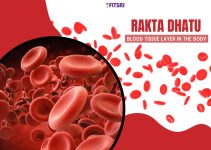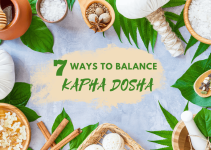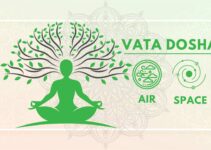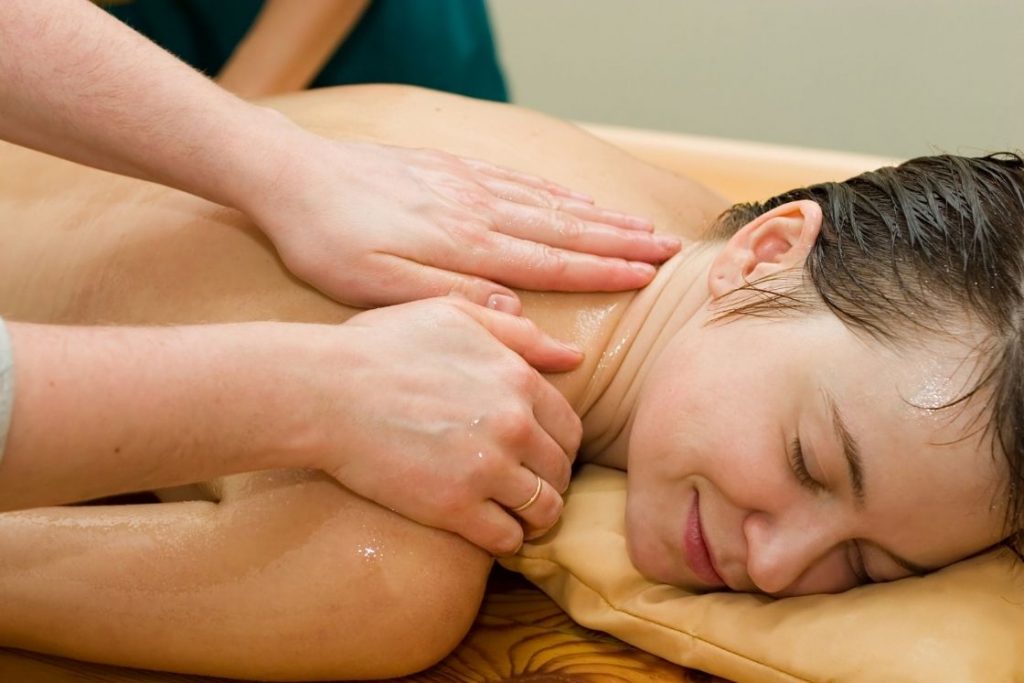
Massage is an integral part of the self-care and ayurvedic treatment of diseases. There are many types of massage Ayurveda recommends one should take for good health or wellness.
Abhyanga is a popular ayurvedic massage that makes most of the pre-treatment of traditional panchakarma therapy. It is generally performed before a shower, steam bath, or actual ayurvedic treatment.
In Abhyanga massage, medicated oil is applied to the entire body with short strokes and every limb from the toes to the scalp is vigorously massaged. The term Abhyanga literally means rubbing oil on the limbs of the body.
Ayurveda says Abhyanga self-massage can be done daily as it nourishes skin tissues and is good to relieve tiredness and body aches.
Read on to know more about Abhyanga massage, its potential benefits and how you can do self-massage at home.
What is Abhyanga?
Abhyanga can be simply translated to “full body massage with herbal oils”. The term “full-body” means that from the toes to the head, each and every part of your body receives a rejuvenating, revitalizing, and relaxing massage.
In ayurvedic treatment, abhyanga massage is performed prior to actual treatment to aid in detoxification and cleansing. It also soothes Vata, Pitta and Kapha Dosha imbalances. However, if not done in panchakarma therapy, it can also be done as a stand-alone massage to reduce muscle stiffness and pain, improve blood circulation, and as a mode of de-stressing.
In abhyanga massage, Ayurveda practitioner uses a warm oil that has been infused with herbs or other oils. This mixture is created after documenting the details of a person’s Prakruti and vikriti (ayurvedic measures of health). This is an important step as the doshas play an important role in keeping a balance of your Prakruti. The herbs and oils used for the massage will directly affect the functioning of doshas.
Which oil should be used for abhyanaga?
Oil in Sanskrit is also known as Sneha, which is used for love. Thus it is believed that having an abhyanga is like surrounding yourself with love. Abhyanga is part of snehana (Oleation Therapy) in process of panchakarma therapy.
This highlights the importance of choosing the right oil for abhyanga massage to get the feeling of warmth and stability.
Based on your dosha,
- If you are vata person, you will have dry skin. Heavy oils such as sesame oil, almond, avocado can be used.
- If you are a pitta person, you will tend to have sensitive skin. Sunflower oil, coconut oil, or ghee will be beneficial for you.
- If you are a kapha person, your skin will be oily enough. Light oils such as flaxseed oil, safflower oil, sweet almond oil can be used.
However, if you want to go for a neutral oil, Jojoba oil can be used for all doshas.
Can you do abhyanga massage at home?
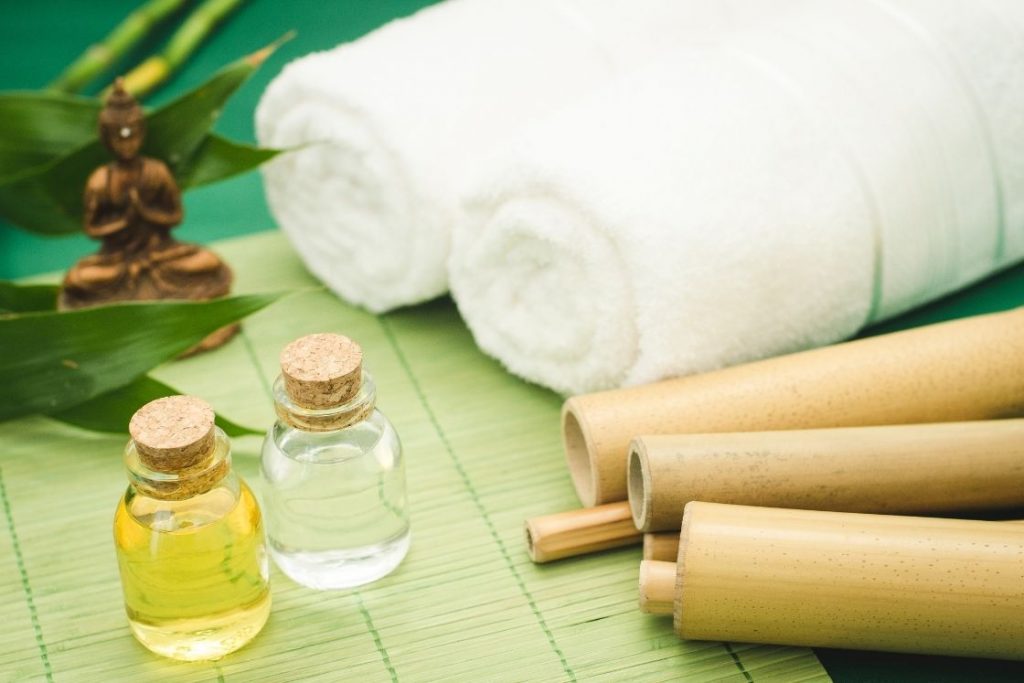
You may think that since it is an ayurvedic massage and involves some technicalities, you will have to shell out money to go to an ayurvedic center to get the abhyanga. But what if you can do this massage at home as well?
It should not come as a surprise that abhyanga is often prescribed as a self-care routine. You can massage yourself daily before going for a bath or steam bath. It gives the same relaxing benefits as you would get when getting the massage in an ayurvedic center.
The best part is that you do not need another person and you can take your time with the application. And you can perform abhyanga every day. If you do not have the time for daily application, 2-3 times a week can also be effective.
All you would need is an old towel to avoid oil stains, a squeeze bottle or a small pot to contain the oil, a vessel to heat the water for warming up the oil, and the herbal oil.
At first, you may find some difficulty in giving the right pressure and strokes to your body parts or reaching some parts of your back. But the regular application will make you accustomed to the process.
The oil that you use should cater to your Prakruti. We have already listed some recommended oils that you can use based on your dosha, however, getting yourself checked by a certified ayurvedic practitioner will give you accurate information.
You can also use other herbal oils to mix with the base oil. You can use Brahmi/gotu kola oil to calm the mind, ashwagandha oil for strong muscles, mahanarayan oil for joints, bhringraj oil for hair, neem oil for skin.
Tips to remember for abhyanga self massage
Before performing the abhyanga at home, make sure to keep in mind these important points:
- Always use warm up your oil before the massage. You can keep oil bottle in pot of hot water for it to remain in constant temperature or use an electric oil warmer.
- The temperature of oil largely depends on the dosha you have. As such if you are a pitta person, use the oil at room temperature or at a cool temperature. If you are a vata person, slightly warm oil will be good. You can ask ayurvedic practictioner regarding the temperature in case of any confusion.
- Wherever you are performing the abhyanga, do not forget to lay an old towel to catch the oil drop. Since you use a healthy amount of oil in the massage, it is imperative that few drop will fall during the process.
- Do not hurry with the massage. Spend at least 15-20 minutes on massaging the entire body, from head to toe. Give sufficient time to each body part.
- Be careful while getting up after the massage is complete as the oil on the soles can make your feet slippery.
- Avoid going for a bath immediately after the massage. Give 5-10 minutes after the massage for the oil to seep into your body, deep into the pores, muscles and joints.
- Use an ayurvedic soap and shampoo to clean the oil from your body and hair.
How to Do Abhyanga self massage
Before you begin, wrap a towel or a thin cloth around yourself to avoid feeling cold. The best place to perform abhyanga self-massage is the bathroom as you would be less worried about spoiling the floor with oil drops and creating a mess.
Do a patch test on the inner wrist to check the temperature of the oil. Avoid using oil in areas where you have scratches, wounds, cuts, inflammation, or abrasions.
Typically, the massage should start from the scalp and gradually go down to the feet.
Below are the steps to perform abhyanga self-massage.
- Sit on a stool or a chair with the old towel spread under our feet.
- Start by applying the oil to your scalp. Use a gentle circular motion to evenly spread the oil. This process is also called shiro (head) abhyanaga.
- Coming to the face, massage the forehead, temples, cheeks, and jaws from centre to sideways. Start from the jaw and move towards the forehead and temples.
- Lightly pinch and stretch your earlobes and apply the oil all over the ear as it is home to many vital energy point or marma points and nerve endings.
- Massage your back by using your left hand for the right side and vice versa.
- For your arms and legs, use long strokes. The first stroke should be away from the heart (anulom) and them coming back towards it (pratilom).
- Joints such as elbows and knees ahould be massaged using a circular motion.
- For the stomach, buttocks, and chest/breast, apply the oil in a clockwise circular motion. You can follow the path of the large intestine for your abdomen area. Start from the right, move across and go down on the left. The circular motion will help stimulate the digestive system.
- As you reach your feet (Pada Abhyanga), spend enough time on them. Your feet also contain essential marma points and they sustain most of your weight.
- If you want, you can also apply the oil in your genitals, with the anal region at last. This is only done when doing a self-massage. This step will not be done when you go to an ayurvedic center.
- Ayurveda recommends abhyanga should be performed for a minimum of 15 minutes. After finishing the massage, allow the oil to deeply seep into the skin for 5-10 minutes.
- Take a warm bath with an ayurvedic soap and shampoo, without any vigorous rubbing.
- Use a towel to remove excess water by dabbing it on your body.
Note – If you are vata person, apply a slower pace with light pressure for grounding. For a pitta person, slow strokes with moderate pressure are advised. Kapha people can use rapid strokes for enhanced stimulation.
Benefits of Abhyanga
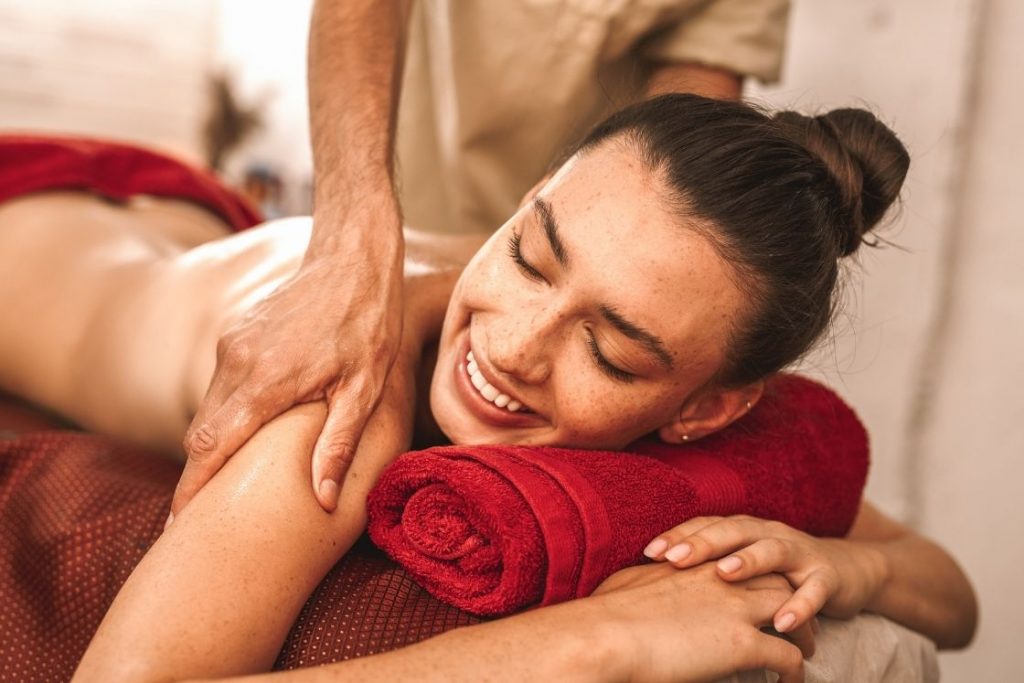
A successful abhyanga will let you feel relaxed, calm, and rejuvenated. If performed before bedtime, you will experience a wonderful sleep. Overall, it improves circulation, opens and stimulates the various marma points, nadis, and helps reduce stiffness and pain.
A list of more benefits have been given below:
- Abhyanga helps in reducing stress as the herbs infused in the oils calm the mind and activate the parasympathetic nervous system.
- Abhyanga massage lowers blood pressure by expanding the blood vessels and improving circulation.
- If you are having trouble getting restful sleep, abhyanga can greatly help you tackle sleep problems.
- Abhyanga massage improves flexibility and aids in toning. Circular motions or long strokes stimulate muscles and joints.
- As your muscles and joints are stimulated constantly, your energy and stamina are also increased with abhyanga massage.
- Various vital energy points and nerves ending are also stimulated. This promotes calming the nervous system.
- By increasing blood circulation, abhyanga improves skin health and decreases the aging process.
- The increased circulation also aids in detoxification and cleansing by massaging the lymphatic nodes.
- Abhyanga let your respiratory system, digestive system, and elimination system work properly due to massaging of these areas.
- The abhyanga is especially beneficial for Vata people as it reduces the imbalances and diseases caused by vitiation.
- The thorough stimulation on the face and ears improves the functioning of the sense organs. If done daily, your eyesight may also improve
Conclusion
Even though there is very limited research done on the benefits and working of abhyanga, this ancient practice has time again proven itself. Massaging the entire body in one sitting or in parts will instill a sense of self-love.
It promotes better skin and hair health, improves the digestive system, detoxification, increased circulation, and enhanced sleep quality, which is what everybody wants!
Frequently Asked Questions
Abhyanga can be performed daily. In case of time constraints or a busy schedule, performing abhyanga 2-3 times a week is also beneficial.
Your dosha also greatly determines the number of times you should perform abhyanga.
Vata Dosha – 4-5 times a week.
Pitta Dosha – 3-4 times a week.
Kapha Dosha – 1-2 times a week.
Ayurveda recommends Abhyanga should be done early morning before taking a bath. However, based on your dosha type, an Ayurvedic doctor may prescribe doing it in the evening time.
You should avoid abhyanga massage till you have significantly recovered from cold, flu, fever, congestion, indigestion, diarrhea, menstruation and menstrual pain, indigestion, or disorders due to excess vata dosha.
Even if you have a skin infection, injuries, broken bones, have undergone surgery, or feeling immense pain in any body part, abhyanga should not be performed.
There are special massages available for pregnant ladies, newborn babies, and post-pregnancy as well. But for such instances, you should rely on an expert ayurvedic masseuse and practitioner to suggest the best massage process.
However, there may be instances pregnant ladies may be told not to get massages till the second trimester. This is because there is a higher risk of miscarriage in the first trimester or the increased circulation may cause any harm.
Yes, you can exercise or do yoga after abhyanga massage but make sure to do it before taking a bath. Yoga can be done immediately after the massage when you need to give time for the oil to absorb into the body. But make sure that you are not performing any strenuous or physically draining poses. This may cause stress and tiredness, which defeats the purpose of the abhyanga massage.
No, you should maintain a gap of 2-3 hours after a meal or perform abhyanga before a meal. Performing abhyanga massage immediately after eating is not recommended as the energy and blood are being supplied towards the digestive system. It may disrupt the entire process.
